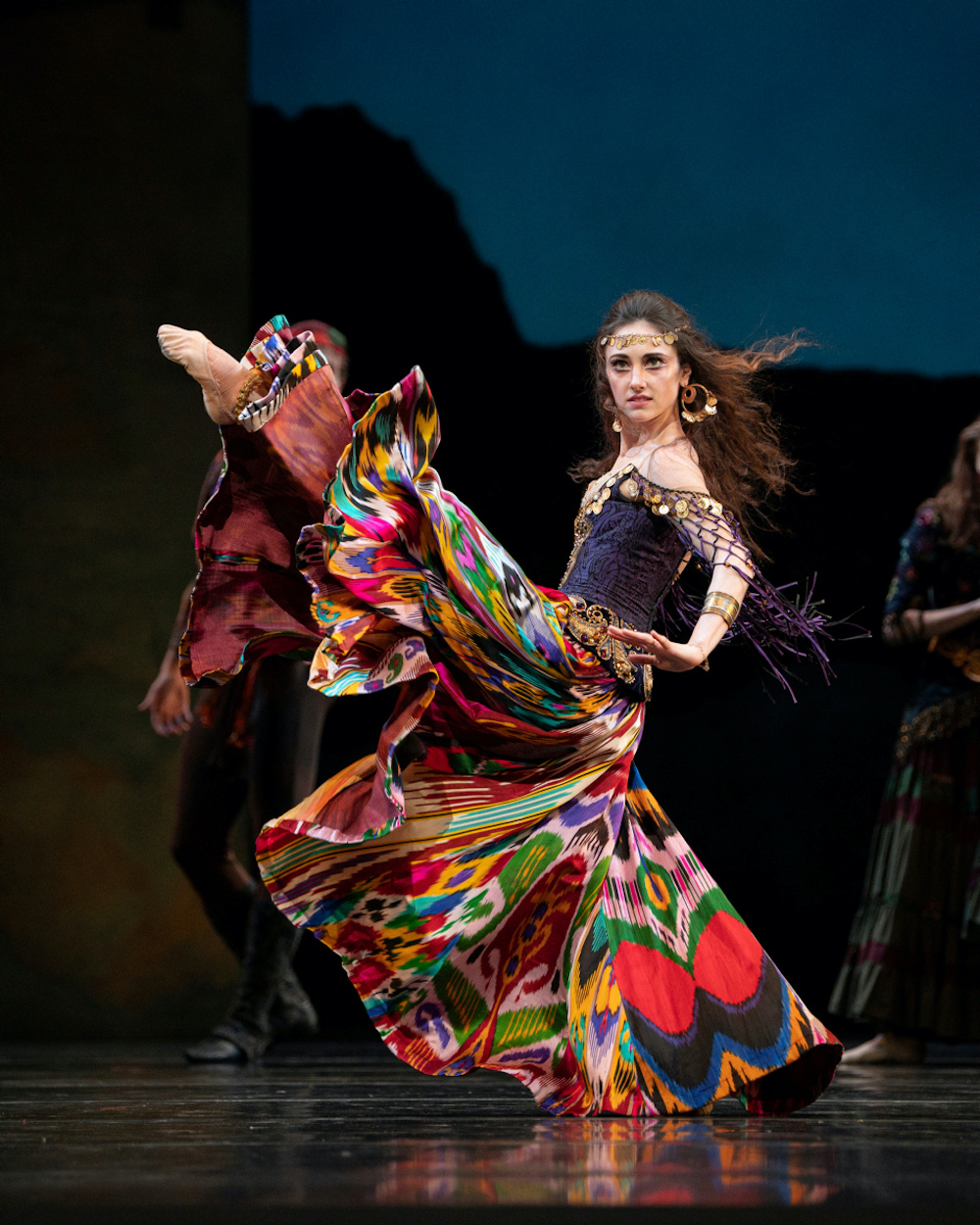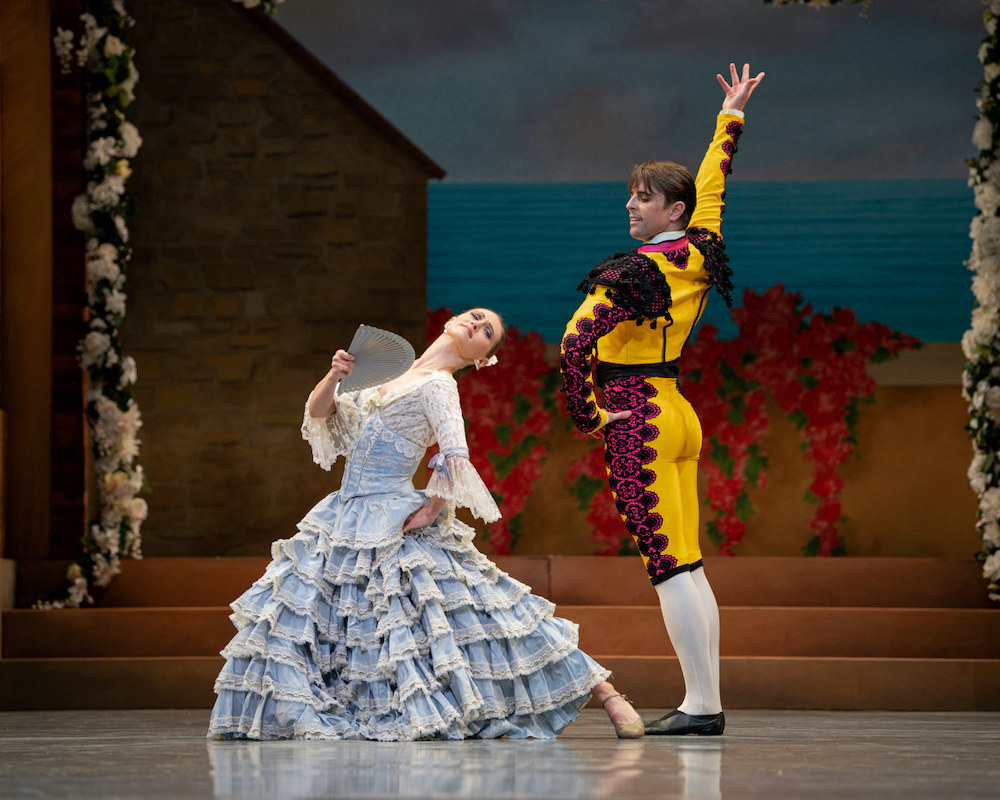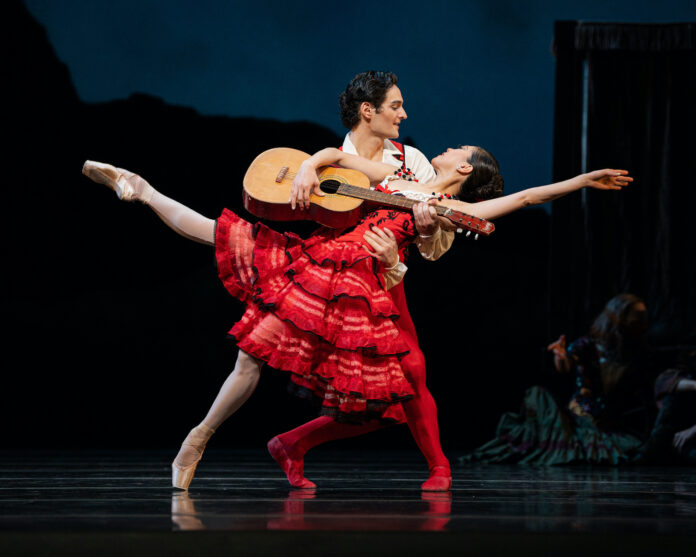There’s something noticeably missing from the San Francisco Ballet version of Don Quixote (music by Minkus, choreography by Petipa by way of Gorsky.) It isn’t a lack of windmill, which appears as designed by the late Martin Pakledinaz. It isn’t a lack of Sancho, jovially portrayed here by a tumbling, bumbling Pascal Molat. Nor is it a lack of skill needed to pull off Petipa and Gorsky’s many high-flying twirls. No, the one thing Don Quixote seems to lack is its eponymous lead.
Oh, he’s there, portrayed in all his crusty-armored glory by Jim Sohm. But whereas Cervantes put us in the wildly-imaginative head of the self-appointed knight-errant, the ballet (which runs through March 6) often forgets he’s there at all. After being introduced to Sancho in his library, the two vanish for long stretches of time in all three acts. When they don’t vanish entirely, they often just sit to the side and observe the lovelorn misadventures around them.

Though even Gorsky’s revamped version is over a century old, I was reminded of the Ballet’s recent world premiere of Mrs. Robinson, which gave The Graduate’s notorious seductress more prominence and ostensibly, more depth. It didn’t succeed in the latter regard, as Mrs. Robinson still seemed bound by the well-established plot points and story beats.
Don Quixote’s problem is the opposite: stripping its main character of all that much to do until he has to has to hit a specific plot point, such as “battling” the windmill. But we’re given no insight into his mind, and we don’t see the dragon he sees, literally or figuratively. It’s hard not to feel discomfort when it seems the ballet’s authors created the piece for the sake of mocking a delusional old man, albeit a fictional one.
Still, what the show lacks in the presence of its title character it makes up for pirouettes and a pint-sized horse. Yes, an actual mini-horse gallops the stage alongside is regular-sized counterpart, the respective steeds of Sancho and Quixote.
The action mainly focuses on the budding romance between Spanish villagers Kitri (Misa Kuranaga) and Basilio (Angelo Greco), as the latter attempts to woo her over from a pompous would-be suitor Gamache (Myles Thatcher) and over the objections of Kitri’s father Lorenzo (Val Caniparoli). Their Quixote-witnessed courtship takes them from the lavish town square to a starlit Romani village (featuring a scene-stealing solo by Ellen Rose Hummel) and back to the square again. Granted, there is a brief stop in Quixote’s dream world (featuring an equally fine turn by Norika Mutsayama), but it still lacks insight into how his mind works.

Regardless, this is Kuranaga and Greco’s show. The one-upsmanship between the two leads to a great many leaps above the heads of their fellow dancers. Greco, in particular, clearly revels in showing off one acrobatic jeté after the other in great succession. Like a bird trying to attract a mate in the next tree, he intends for Basilio to flutter higher and grander than Gamache, whose loud colors actually do remind one of a wild bird. Not to be outdone, Kuranaga renders Kitri and her fouettés more than capable of standing alongside her flamboyant suitor.
The rest of the company are equally game for Petipa and Gorsky’s steps. As guided by Helgi Tomasson and Yuri Possokhov, the moves give a nod to the source material by merging traditional ballet with Spanish flamenco dancing. For the most part, the merger is smooth, but there are times when it switches from one to the other as if it can’t decide which it would rather be at the moment. But watching the dancers switch from relevé to retire whilst moving backwards is enviable.
Don Quixote is a curious creation: almost entirely dismissive of the character after which it’s named, but full of the very bombast that would likely attract a first-time ballet patron. It’s less a solid adaptation of the notoriously difficult-to-adapt story than it is a reflection of its characters and their need to display grandly.
DON QUIXOTE runs through March 6 at the War Memorial Opera House, SF. Tickets and information here.






